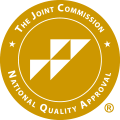Cedar Crest Hospital & Residential Treatment Center helps individuals who are struggling with alcohol addiction find long-term recovery. Located in Belton, TX, Cedar Crest is the leader in mental health care.
Understanding Alcohol Addiction
Learn about alcohol addiction
Most people are able to have a drink or two without developing any problems. They’re able to have drinks with friends after a long day at work, and go home without suffering any adverse consequences. Other people, however, have developed a problem with drinking and their alcohol use has led to a number of problems in their lives. While it’s common to hear the terms “alcoholism” and “alcohol abuse” used interchangeably, these two terms have very different meanings. Alcohol abuse is a chronic, debilitating disease in which a person is unable to stop consuming alcohol despite the negative effects on their work, interpersonal life, education, or health. Alcoholism, the more severe of the two disorders, is a highly destructive pattern of alcohol usage that involves a physical tolerance and the presence of withdrawal symptoms if alcohol consumption is cut back or stopped.
Contrary to what some think, those who abuse alcohol or have developed alcoholism are not drinking because they lack self-control or are weak. Alcoholism, alcohol abuse, and addiction are diseases that one cannot simply walk away from, even if they seriously want to stop drinking. However, with proper treatment, detox, medication, and therapies, those who struggle with alcohol abuse or alcoholism are able to successfully overcome their addiction and lead happy, healthy, sober lives.
Statistics
Alcohol addiction statistics
In the U.S., alcohol abuse and alcoholism affects about 10% of women and 20% of men, most of whom begin using alcohol during their teen years. About 15 million people are affected by alcoholism or alcohol abuse. The mortality associated with alcohol abuse and alcoholism is astounding. Nearly 2,000 teens under the age of 21 will die in any given year as a result of alcohol use. In 2011, the number of alcohol-induced deaths (excluding homicide and accidents) was nearly 26,000 individuals. That very same year, nearly 16,000 people died as a result of alcohol-induced liver disease.
Causes and Risk Factors
Causes and risk factors for alcohol addiction
Researchers tend to agree that addiction to alcohol and drugs is not a disease caused by a single cause or factor, but rather by a number of different factors working together. Some of the most common causes and risk factors related to addiction and alcoholism include:
Genetic: People who have first-degree relatives who struggle with addiction are at a higher risk for developing an addiction themselves. However, not all who end up engaging in problematic drinking have a family history of addiction.
Physical: The process of becoming addicted to – and dependent upon – alcohol occurs slowly. Chronic alcohol consumption can change the normal balance of chemicals and nerve pathways in the brain associated with pleasurable sensations, judgment, and the ability to exert control over behaviors.
Environmental: People raised in an environment in which addiction is the norm or where drugs or alcohol are used to cope with life stressors are more likely to develop a problem with addiction. Additionally, people who begin drinking at an early age are at increased risk of developing addiction later in life.
Risk Factors:
- Having a partner or close friend who drinks regularly
- Presence of depression and other mental health disorders
- Steady drinking over time on a regular basis can produce a physical dependence upon alcohol
Signs and Symptoms
Signs and symptoms of alcohol addiction
The symptoms of alcoholism and alcohol abuse are different from one person to the next and depend upon individual genetic makeup, amount of alcohol used, frequency of use, and presence of other drugs. Some of the most common symptoms of alcohol use and abuse include:
Behavioral symptoms:
- Drinking alone
- Inability to limit the amount consumed
- Cravings for drinking
- Loss of pleasure in previously-enjoyed activities
- Unusually passive
- Drinking with the intention of getting drunk
- Hiding alcohol in odd places around the house
- Becoming irritated when unable to obtain alcohol
- Violence and aggression
- Risk-taking behaviors
- Heightened libido
Physical symptoms:
- Smell of alcohol on breath or skin
- Vomiting
- Flushed skin
- Bloodshot eyes
- Deterioration in physical appearance
- Poor hygiene
- Impaired coordination
- Sexual dysfunction
- Slurred speech
- Increased urination
- Sleepiness
- Passing out
Cognitive symptoms:
- Hallucinations
- Delusions
- Psychosis
- Decreased attention span
- Memory loss
- Challenges with cogitation
- Slower brain activity
Psychosocial symptoms:
- Low self-esteem
- Depression
- Anxiety
- Agitation
- Irritability
- Altered emotions
Effects
Effects of alcohol addiction
The effects of alcoholism and alcohol abuse depend upon a number of different factors, including individual characteristics, amount used, length of abuse, presence of other drugs or alcohol, and the frequency of use. The most common effects of chronic alcohol use and alcoholism include:
- Strained personal relationships
- Loss of employment
- Financial problems
- Consequences of risky behaviors
- Car accidents
- Legal problems
- Bone loss
- Stroke
- Amnesia
- Cirrhosis of the liver
- Alcoholic hepatitis
- Increased involvement in violent crimes
- Domestic abuse
- Child abuse
- Divorce
- Incarceration
- Hypertension
- Cardiac arrhythmias
- Increased risks for cancer
- Weakened immune system
- Impotence
- Irregular menses
- Thymine deficiencies
- Dementia and confusion
- Acute pancreatitis
- Suicide
- Coma
- Death
Overdose & Withdrawal Effects
Effects of alcohol overdose & withdrawal
Withdrawing from alcohol can be very dangerous and should always be done under the careful supervisions of a trained medical personnel to prevent complications. While the symptoms of withdrawal are usually unpleasant, if not properly managed, symptoms can quickly become life-threatening. Common symptoms of alcohol withdrawal begin within 12 to 24 hours after the last drink and may include:
- Mild anxiety
- Insomnia
- Sweating
- Shaking
- Confusion
- Fever
- Irritability
- Nausea and vomiting
- Headache
- Hallucinations
- Seizures
- Delirium
Symptoms of alcohol overdose, also known as alcohol poisoning, are serious and need immediate medical attention as they can rather quickly result in death. The most common symptoms of alcohol poisoning include:
- Confusion
- Clammy skin or bluish tint
- Dulled reflexes
- Hyperthermia
- Difficulty maintaining conscious
- Unresponsive
- Vomiting
- Trouble with breathing
- Slowed heart rate
- Seizures
- Coma
- Death
Co-Occurring Disorders
Alcohol addiction and co-occurring disorders
Alcoholism and alcohol abuse do not normally occur without the presence of another mental health condition. The most common co-occurring disorders include:
- Other substance abuse and addiction
- Anxiety disorders
- Post-traumatic stress disorder
- ADHD
- Borderline personality disorder
- Conduct disorder
- Schizophrenia
- Bipolar disorder
- Self-harm
- Suicidal ideation

















